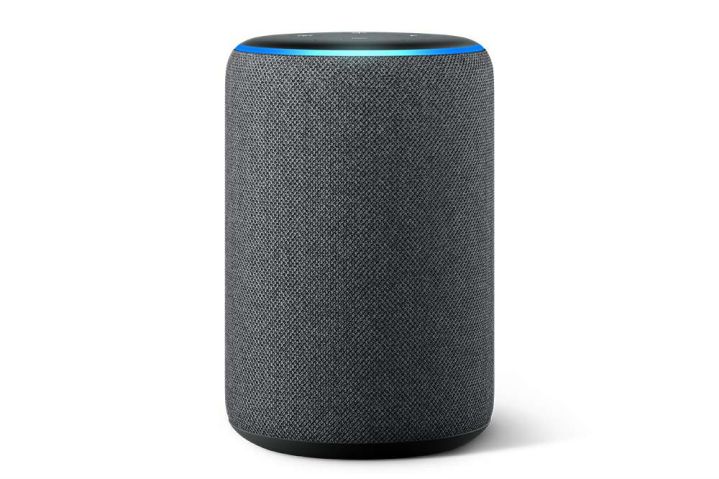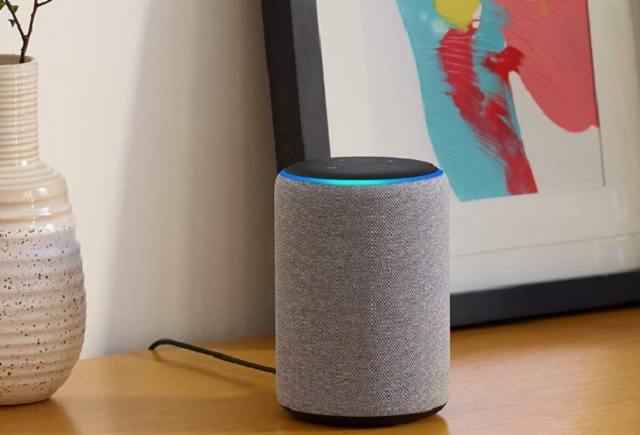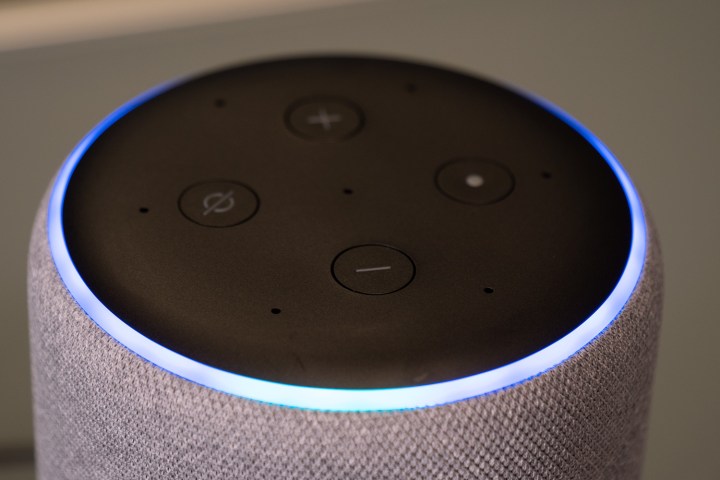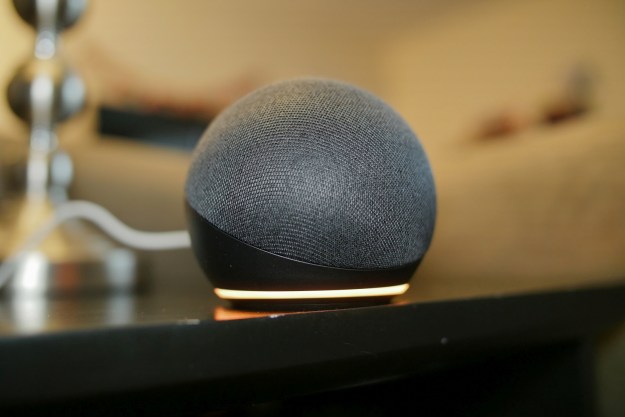If you’re looking for a larger, louder Echo speaker, the Echo and Echo Plus are two great options. The flagship third-gen Echo and its cousin, the second-gen Echo Plus, may look the same, but they are different under the hood.
What are the differences between the Echo and Echo Plus speakers, and which is the better of the two? We’ve broken down both products by design, sound, usefulness, and price to help you decide which Echo is best for you.
Design

If you put the Echo 3rd gen and the Echo Plus second-gen next to each other, could you tell the difference? Probably not. Past generations had very distinct design differences between the two Echos, especially when Amazon switched to fabric exteriors for the more advanced models. But at this point, the two versions have caught up with each other and have more or less the same design.
The Plus and the new Echo both have the same cylindrical shape, and they have the exact same dimensions at 5.8 inches tall and 3.9 inches in diameter. The action button, volume control, privacy switch, and power cord are all in the same spots. Currently, the biggest difference is the colors that each comes in. The Echo 3 is available in charcoal, heather gray, sandstone, and twilight blue. The Echo Plus 2 is available in only charcoal, heather gray, and sandstone, giving you one less option.
Sound

Echo models take sound quality to another level with Dolby speaker technology, but is there any difference in the audio hardware inside these two models? Again, there used to be — but now the two are identical in this area, too. Both sport a 3-inch woofer and 0.8-inch tweeter inside a design made for 360-degree sound, and it works very well. We were impressed with the sound upgrade that the Echo Plus received when it first came out, so it comes as no surprise the 3rd-gen Echo copied the same audio system.
Both the Echo and Echo Plus also support multi-room audio, so you can play one track in your kitchen while someone else listens to a different track in the living room. You can also pair both devices with the Echo Sub, a subwoofer that can help you add some bass to your listening experience.
Even if you’re not happy with the sound from either device, you can easily hook your Echo or Echo Plus up to a high-end set of speakers, as both the Echo and Echo Plus have a 3.5 mm audio output jack (which can be configured as an input jack when necessary).
Usefulness and connectivity

Improved audio is nice, but ultimately, the point of a smart speaker is to make mundane tasks easier. Echo devices work with thousands of Alexa-compatible smart home devices including doorbells, lights, thermostats, and more.
All Echo speakers feature the same Alexa capabilities, with more added regularly to the entire Echo lineup through firmware updates. Both the Echo and Echo Plus have what Amazon calls improved “far-field voice recognition,” so their microphones can hear your commands from afar, even in noisy environments. They also have “Guard” technology that can listen for sounds like breaking glass or smoke alarms and send you alerts about the noise.
But here, we run into the big difference between the two models: The Echo Plus has a couple of extra smart home features that the Echo 3rd-gen does not.
Zigbee wireless compatibility: Zigbee is a wireless standard that some smart devices use to communicate. It’s not as common these days when most smart devices work over Wi-Fi, but for older devices or very specific devices, Zigbee connections may still be required. The Echo Plus 2 has this Zigbee compatibility in what Amazon calls a “smart home hub,” so it can control a wider range of smart devices than the Echo 3. This makes it more suitable for a home that’s been collecting smart devices for some time, or a building that still needs Zigbee-only devices. Note that Zigbee has a competitor standard called Z-Wave, and they are not the same thing.
Temperature sensor: The Echo Plus also comes with a temperature sensor that you can assign to the Echo and calibrate to detect the temperature in your room. This allows you to give
Pricing and availability

The third-generation Echo retails for $100, but sometimes you can find it on sale for $80.
The second-gen Echo Plus retails for $150, but may be available for $100.
You can often find Amazon Echo bundling deals where you can get two different Echo devices or an Echo device and a smart home product (like a lighting kit or smart plug) at a discounted price. The Echo 3, for example, can often be bundled with the Echo Sub, smart bulbs, a smart plug, and other deals. The Echo Plus 2 has similar bundle options, but not as varied.
Conclusion
The Echo Plus’s built-in Zigbee compatibility and temperature sensor are the standout differences between the Echo and the Echo Plus. This feature factors into the price difference, though, with the standard Echo costing about $50 less than the Plus model.
Due to that price difference, we typically recommend the Echo 3 for most users, especially since it shares most of the same features as the Echo Plus.

There are a couple of exceptions, though. If you own smart home devices that require Zigbee connections or if you want to set up smart routines based on specific room temperatures, then the Echo Plus 2 might be the better option. If you’re not sure you can choose between the two, you might want to opt for the 4th generation Echo speaker that combines all the best parts of the Echo and the Echo Plus into one speaker that only costs about $100. The 4th generation Echo releases on October 22, 2020, has a spherical shape, premium sound (with a 3-inch woofer and dual 0.8-inch front-firing tweeters), and a built-in Zigbee hub.
Editors' Recommendations
- Blink Mini 2 vs. Blink Mini: Is Amazon’s new security camera a worthy upgrade?
- What is the Amazon Echo Hub?
- The best smart lamps of 2023
- Which Amazon Echo should you buy?
- Amazon’s Echo family expands with an on-wall hub, smart glasses, and more



